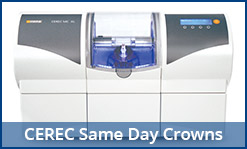Developing cavities takes no skill at all. In fact, tooth decay can happen to any of us at any stage of our lives. It’s particularly prevalent on the teeth in the back of your mouth, also called molars. These are the teeth we use to chew food, so it’s only natural that food particles get trapped between these back teeth. Molars also have grooves that are called fissures and pits. These help us to more effectively chew our food, but they make it very difficult to clean these teeth since food can get trapped inside these grooves. Molars are also more difficult to thoroughly clean because of their location in the back of your mouth. In fact, even if you brush and floss vigorously and often, you can still miss food trapped in between molars and inside their tiny pits and fissures.
Fortunately, there is something your dentist can do to help protect teeth from collecting food particles and developing decay: dental sealants. A sealant is a smooth, extremely thin plastic coating that your dentist can apply directly over your natural teeth. A sealant protects your teeth, helping to prevent plaque and tartar from building up, and thus preventing decay from forming.
Although sealants have been used by dentists for many years – decades, in fact – it’s only recently that research has shown how sealants can not only protect teeth but can actually stop the early stages of tooth decay. This means a tooth that might otherwise eventually need a filling or crown might not if a sealant is applied in the early stages of decay when the bacteria can be sealed in.
It’s no wonder that dental sealants have become increasingly popular over the past several years, since they are an excellent way to prevent cavities from forming. Any age dental patient can benefit from sealants – from young children to the elderly. And there’s more good news about sealants: the procedure involved in applying them is remarkably quick and easy. Your dentist begins by thoroughly cleaning the teeth that will be sealed. After that, he or she simply applies the sealant directly to the tooth surface and uses a specially designed light that helps the sealant bond to the tooth enamel. The entire procedure typically takes only one visit to the dentist office.
Of course, nothing replaces a daily oral hygiene routine at home and regular trips to the dentist for professional cleanings and exams. Sealants can be a great way of protecting teeth from decay, but you’ll still have to take all the other steps necessary to ensure that you enjoy good oral health for years to come.











